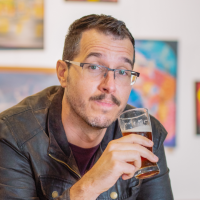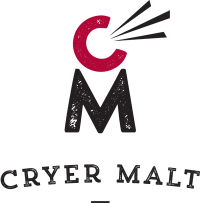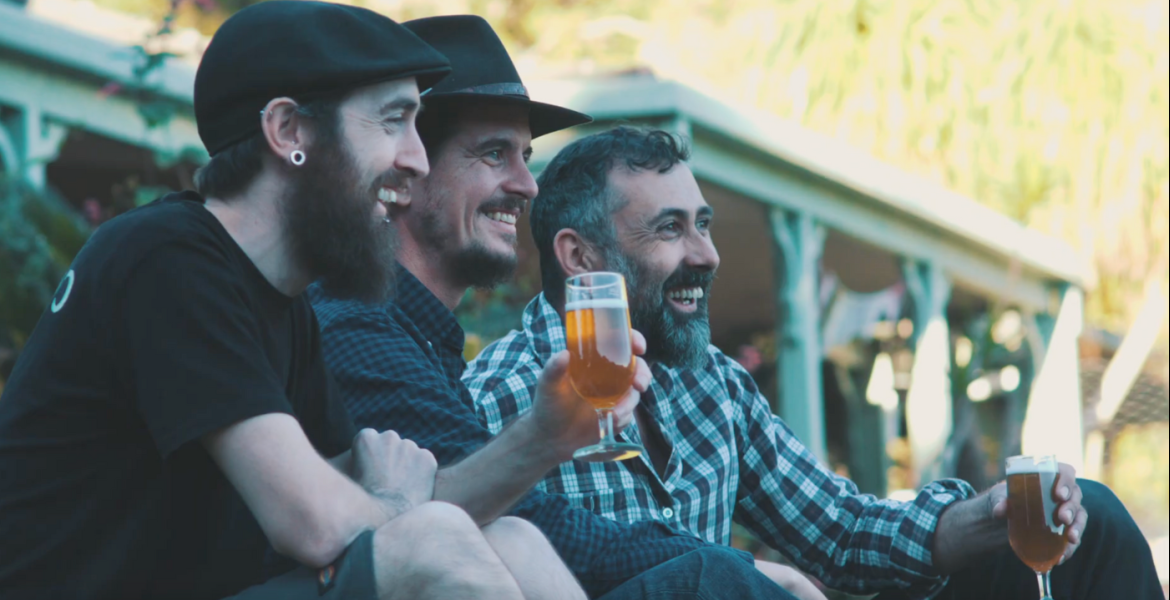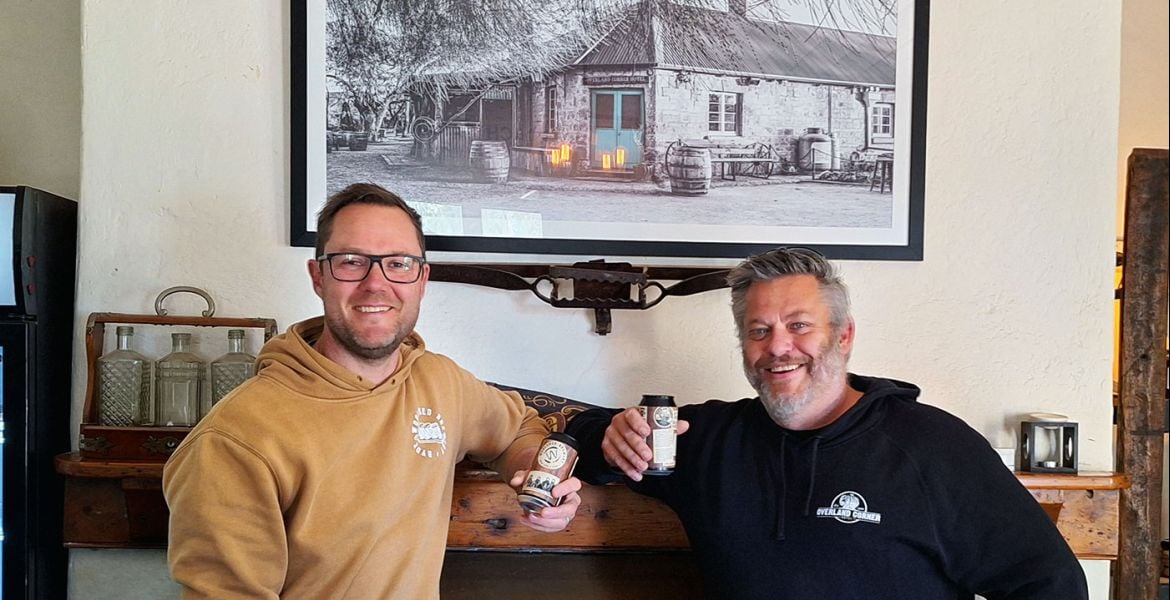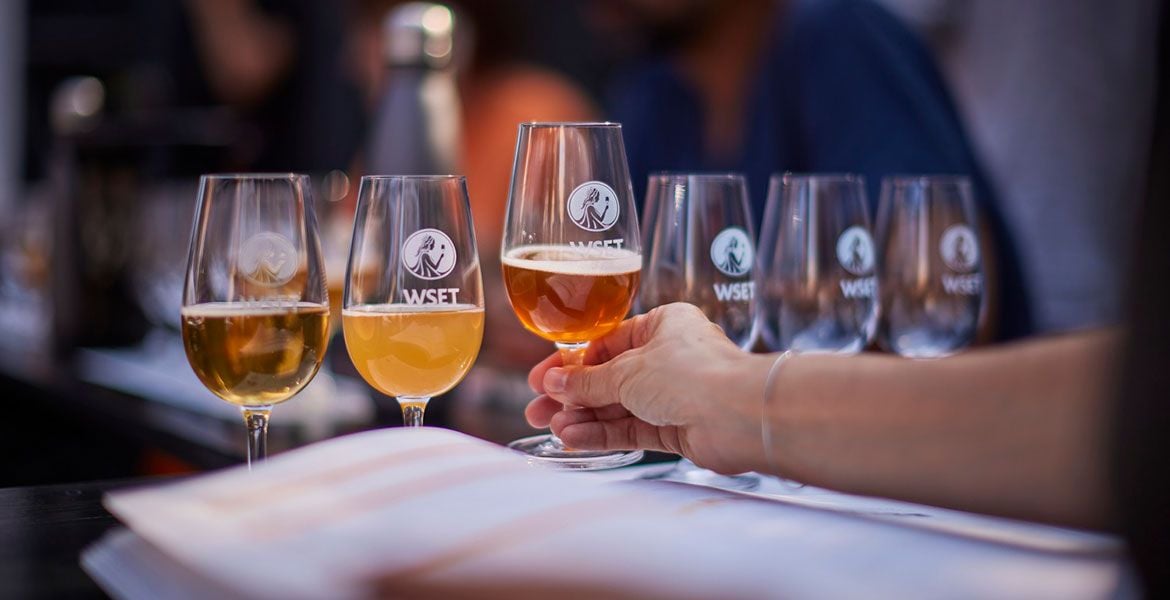You may have heard of this mysterious Norwegian brewing ingredient already. If you haven’t, you likely will soon. But just what is “super-yeast” kveik?
Is it true it can fully ferment a beer in 36 hours? Is it somehow related to kriek, the cherry lambics originating in Belgium? Can it really go to work at a sweltering 40C? Is it used in secret Viking beer orgies?
The answers are yes, no, yes, and gross. But the truth surrounding kveik is interesting enough that we can leave behind the rumours and enjoy instead the romantic history.
What the kveik?

Let’s start with the word itself. Aussies struggle to pronounce Norwegian words on the whole – which committed beer geek hasn’t been part of a confused conversation about how to pronounce Nøgne Ø? – and kveik is no different.
In English, it sounds like "kwie-ick"; alternatively, slap on a thick Aussie drawl and say the word “quake”. While it’d be fun if the literal translation were Fjords-of-Odin or something similar, in reality it just means yeast in one of the many Norwegian dialects. After all, the peasants who were originally using it weren’t specifying whether they were using kveik or US-05 – to them, it was just yeast, and it’s what they used to make beer or bread.
Of course, in the world of commercial brewing, every possible ingredient has a category and a name – partly so it can be catalogued and sold, and partly so it that beer nerds the world over have something to talk about. In such a world, we could categorise kveik as Norwegian farmhouse yeast.
For so many hundreds of years, kveik has only existed in rural Norway, as yeast cultures are maintained, shared, and passed down within farming families and between neighbours in small villages. The farmers would grow grain (be it barley, rye, or something else), malt it, and either grow hops or gather other plants to flavour the beer. When it came time to add the yeast, they weren’t buying different strains of yeast from a supplier; each family used the yeast they had on hand from their last batch of beer.
While kveik is completely normal to the people who have brewed with it for generations, it’s different to the brewing yeasts we’re used to in Australia. It simply doesn’t play by the same rules.
These farming families who brewed with kveik batch after batch, year after year, generation after generation, caused kveik to adapt and evolve to thrive in different brewing environments, and become its own distinct sub-family of farmhouse yeasts. That doesn’t mean that all kveik is the same, though – different regions within Norway, and even families within those regions, have different varieties of kveik.
Perhaps your yeast goes mouldy or sour one day, so you borrow some from your neighbour. From then on, you and your neighbour are using the same kind of kveik. With each generation, both families pass this yeast down, occasionally sharing yeast with each other and with other neighbours, and, over hundreds of years, the whole village ends up using the one kind of yeast. But in another village, two farms just a few kilometres apart may have no real interactions, and so their yeasts remain distinct from each other, each with their own properties and flavour profile.

As well as variations within kveik, the kind of beer made with it would vary from brewer to brewer as well. We could broadly put it into a category called “Norwegian farmhouse ale”, or use the word they would commonly use, maltøl (literally “malt beer", as opposed to the birch sap “beer" or sugar “beer”, which weren’t really what we could call beer at all), and even outline some rough styles, yet there’s still great diversity even within them. The reality is that each family has its own recipes and traditions, which have grown and evolved much as the kveik has.
Some brewers malt their own barley, some don’t; some brew with water, while others brew with a juniper infusion; some make heavily smoked beers, some lightly smoked, and some not smoky at all; some make raw ale, while others boil the wort. Some even scream into the fermenter as they pitch the yeast, according to old superstition that it helps to keep the beer from going sour (as one brewer said: “I'm not sure it works, but it costs so little”).
For the most part, if you were to ask a farmhouse brewer what kind of beer they make, they’d look at you funny, and say something like: “Beer. I just make beer.” They’re not comparing and contrasting to other beers, or using style guidelines. It’s more akin to a nonna’s pasta sauce recipe: “I just put the tomatoes in, some basil, some salt, but never garlic, because my father never liked garlic. That’s how I’ve always done it.”
There are as many pasta sauces as there are nonnas, and as many Norwegian farmhouse beers as there are Norwegian farmhouse brewers. And just about as many kinds of kveik as well.
Once upon a time, there would have been countless varieties of kveik across Norway, but with the dying farmhouse brewing traditions, that’s no longer the case. Some people have moved to using commercial yeast, while many others have stopped brewing, or moved away from farming altogether. Even for those farms still in existence, their kveik will remain unknown to the rest of the world unless someone contacts them and documents or obtains a sample of their yeast.
It’s at this point that we have to talk about Lars.
The Guru

Lars Garshol started blogging about beer in 2005, and slowly became obsessed with traditional farmhouse brewing. In 2013, he wrote his first post about kveik, and hasn’t stopped writing about it since. (Reader beware: if you find this interesting and decide to visit Lars’ blog, prepare to fall down the rabbit hole.)
His name has become inextricably linked to the topic, as he almost singlehandedly brought kveik to the attention of the world at large. Not only did he write about it, but he did an insane amount of research: he’s travelled to numerous different villages in Norway and beyond, talking to brewers (and brewing with them where possible), sampling beers, taking yeast cultures, and even participating in an old drinking ritual (OK, that bit sounds more fun than hard work). He networks with homebrewers, he pores over old archives to learn the history and traditions, and he gets as many yeast samples as possible into the hands of researchers.
Because of Lars, a number of kveik cultures from across Norway that were close to dying out and being lost forever are now being studied and cultivated, with researchers learning more about how kveik fits into the yeast family tree and why it behaves like it does. It’s also thanks to Lars that, as of 2017, kveik has come onto the market as a commercially available brewing ingredient. (It’s worth noting that, while the commercial forms of kveik are isolated strains, the cultures used traditionally are blends of strains, and sometimes include bacteria. The technology required to isolate yeast strains didn’t come about until the late 1800s, and even after that, it wasn’t something that the Norwegian farmers were doing.)
Of course, the whole idea of proprietary strains of kveik being available for purchase is far removed from kveik’s farmhouse origins, in much the same way that we stack Peri Peri chicken and Greek yoghurt onto pizzas, which used to be mere herbs on bread. But, as it looked likely that the traditions of kveik were not far from extinction, Lars put aside any purist notions of holding back his knowledge, and decided to share it as a form of preserving both the kveik itself and the stories associated with it. While farmers would traditionally pass their kveik down to their children, Lars passed it down to researchers and yeast companies, and through them, the whole world.
Characteristics of kveik

Since kveik developed through Norwegian farmhouse brewing, it adapted to those brewing conditions and methods, and now bears a number of characteristics that separate it from the newer, controlled yeast strains used in commercial brewing around the world. As a result, the following will sound crazy to most brewers.
Kveik has a high heat tolerance, and ferments at much higher temperatures than other yeasts.
While the ideal ferment temperature for most ale yeasts sits between 13C and 22C, kveik’s range is more like 18C to 40C, with many varieties thriving at the higher end. At temperatures in the high 30s, most yeast would be producing undrinkable off flavours and dying, but kveik keeps chugging along like The Little Yeast That Could. (One Aussie brewer says he gets the best character out of one of his kveiks at 45C.) As they say, some like it hot. Kveik likes it hot.
However, it can ferment over a broad temperature range while still maintaining its flavour profile.
It’s usual for a yeast’s flavour profile to change as the ferment temperature changes, with more fruity esters being produced, and more phenols that could taste of cloves, spices, or even bandaids and plastic. Kveik, on the other hand, seems to hold a steady flavour profile, even over a wide fermentation range. Of course, when it reaches a certain heat – which, for some kinds of kveik may be 40C, but for others may be more like 45C – the flavours will still change. But letting it drop to 21C or raise to 35C won’t make much difference.
Fermentation with kveik is a quick process – about 24 to 48 hours.
To compare, most yeasts take about 12 to 24 hours to begin visibly fermenting, and about seven days in total to ferment a beer at their ideal temperature. Kveik, in its sauna-like heat, gets going between about 30 mins and three hours, and finishes up after a day or two. It’s so predictably fast that it used to be normal in Norwegian villages that, if you saw someone brewing, you’d show up at their house the following evening, expecting to taste the finished beer.
Kveik has a high alcohol tolerance.
Even though yeast produces alcohol, many strains stop coping once the ABV has reached about 10 percent. (I’d stop coping too if I were swimming in my own waste.) But kveik seems to be made of tougher stuff, with its upper limit being more like 16 percent ABV. As Norwegian farmers traditionally wouldn’t think anything of brewing 150L of a 12 percent ABV beer, kveik had to learn to withstand this hostile environment.
Once fermentation is finished, the yeast falls out of suspension quickly.
Lars says he’s seen kveik settle out of a beer as he watched. The flocculation is strong with this one.
You can dry, store, and re-use kveik.
Drying kveik isn’t the only way to store it. But, as it wasn’t uncommon for a farmer to brew a 150L batch of beer and then not brew again for months, kveik has adapted to being dried and stored for long periods of time between uses, unlike other brewing yeasts.
Norwegian brewers used to dry yeast on linen, or a wooden ring, or a kveikstokk, which is a hand-carved yeast log with notches and holes cut into it to catch the yeast. One such kveikstokk has the year 1621 carved into the bottom of it, so we know the Norwegians figured this method out a fair while ago. Then, when it was time to brew again, they’d just snap off a few chips of yeast and drop them into the wort, or even just dunk the whole yeast-covered tool in, and the kveik comes back to life.
It’s a plucky little thing, isn’t it? Thrives at high temperatures, survives long periods of being dried out… makes you wonder what the Australian beer scene would be like if we’d had access to kveik a hundred years ago. Perhaps instead of families passing down recipes for sponge cake, we’d all be passing down yeast cultures.
The possibilities

Though kveik has a long history in Norway, its story is only just beginning in Australia. Kveik only made its way into the hands of commercial brewers in the USA in 2017, and then the hands of Australian brewers in 2018. Time will tell what impact it will have on the brewing scene, but the possibilities are intriguing and exciting.
Because kveik isn’t as finicky with temperature as other yeasts, it could be fermented at ambient temperature (or at least, with reduced cooling and heating costs), saving energy and money. Because it ferments and flocculates so quickly, kveik can provide a much shorter turnaround on a batch of beer – something that used to take three weeks can now be done in one, freeing up fermenters and effectively increasing capacity. Because the yeast can be dried and re-used, brewers can maintain and share cultures with ease and without cost.
Then there are the endless possibilities with experimentation, mixing cultures, pushing the boundaries of temperature, and playing around with flavours. While we’re loosely calling kveik “farmhouse” yeast, that’s a description of its origins, not the kind of beer it makes.
We struggle to separate the term “farmhouse” from “funky”, because our association with farmhouse is tied up with saisons and Bières de Garde. But kveik ferments clean, and can bring a range of flavours to any number of beer styles, if only we have the imagination to play around with it. Sure, we can have a crack at traditional Norwegian beers – forage some juniper, learn how to make a raw ale, and have at it. Or we can amp up the temperature, get the most of the orange notes of one strand of kveik, or the tropical notes of another, and let the experimenting with styles begin.
And who knows? Maybe for every brewer who buys a strain of kveik to sell beer commercially, there’ll be a handful of homebrewers sharing kveik in jars and trying simple brews. Some of them might even make their own kveikstokk and carve “2019” in the bottom. Perhaps we can keep some of the traditions alive after all, and make our bestemor (that’s Norwegian for grandmother) proud.
Keen to hear from people who have already started using kveik? Then check out part two, where we talk to Aussie brewers and bar owners who have caught the kveik bug.
For further information about kveik:
- Larsblog, Lars Garshol’s blog.
- Milk The Funk, “a communal authority on alternative yeast and bacteria fermentation with an emphasis in alternative brewing techniques”. There’s a Facebook community, a wiki, and a podcast.
- A peer reviewed research paper about kveik (with Lars as one of the contributors) for the real brewing nerds.




